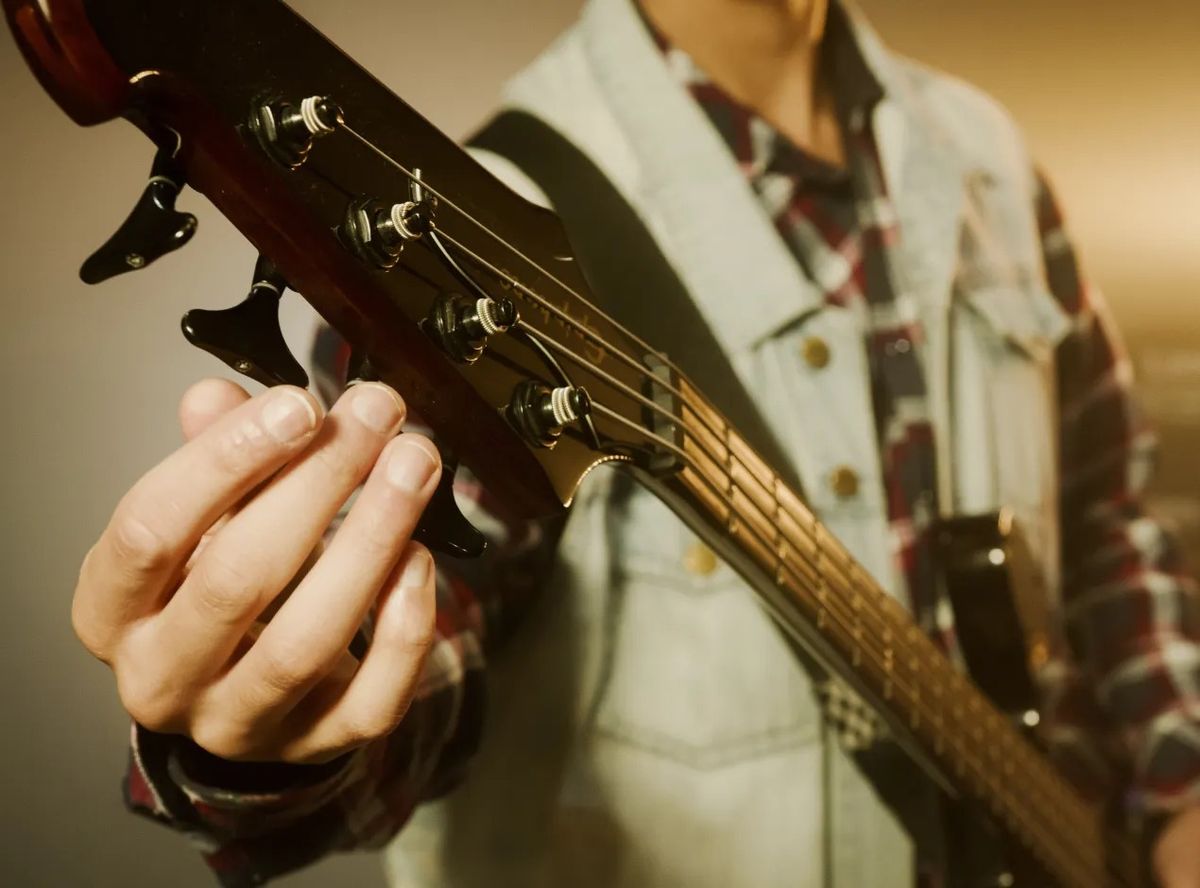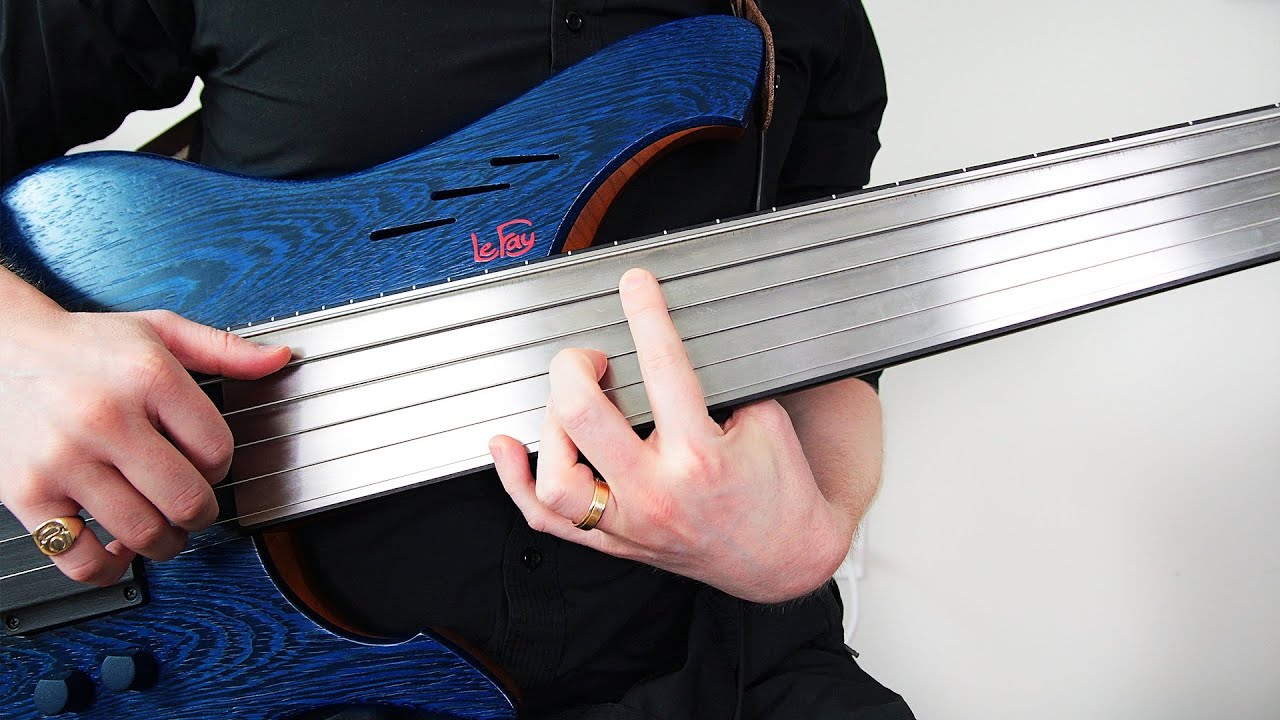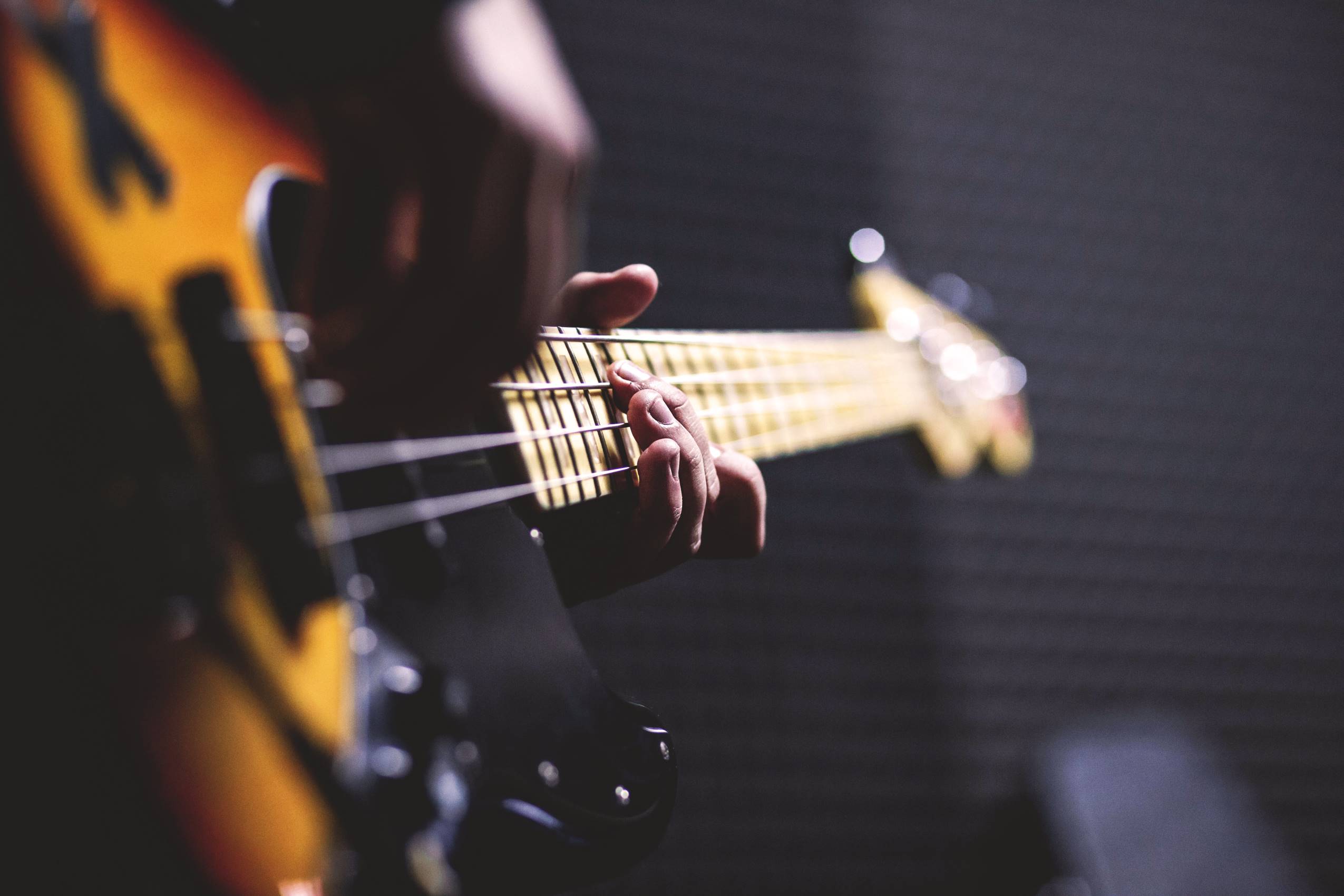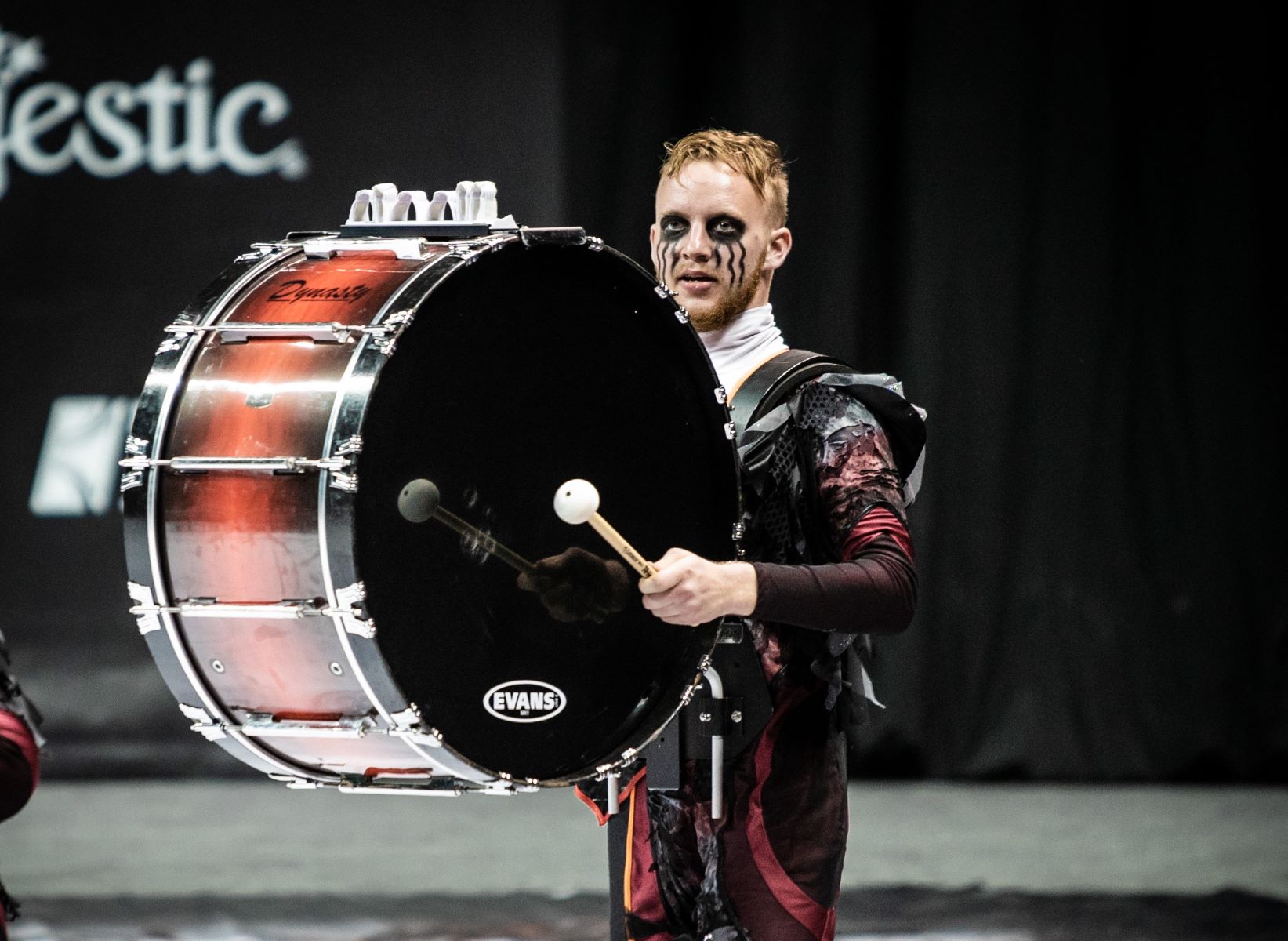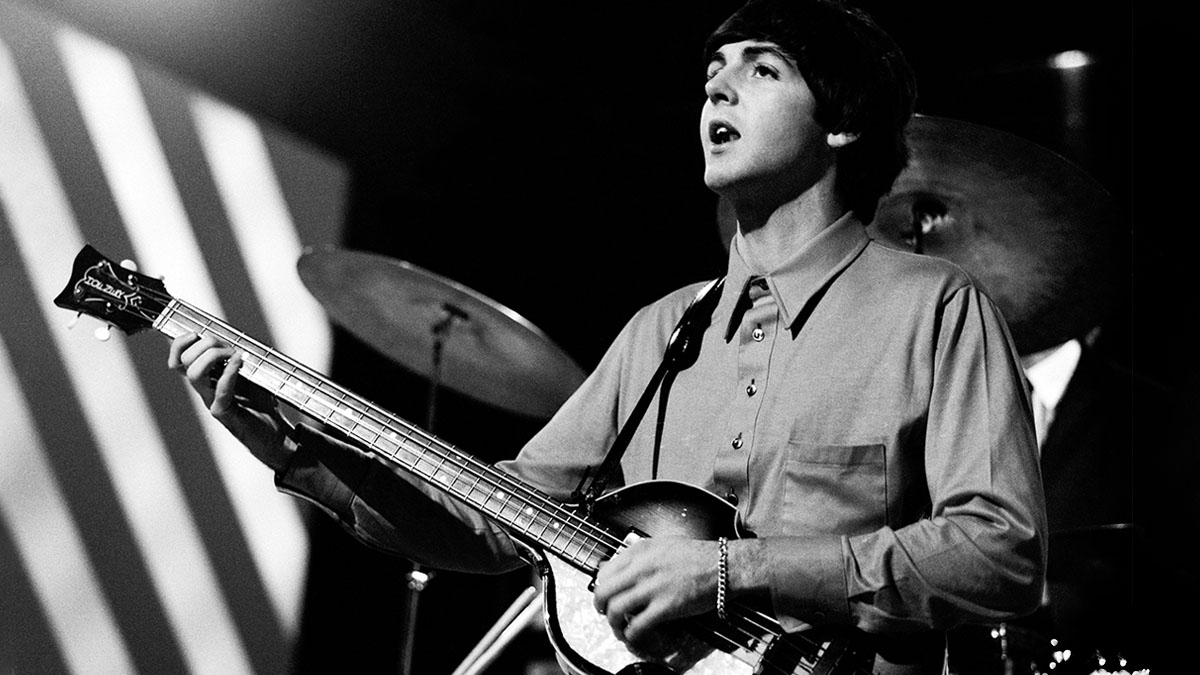Home>Instruments>Bass>What Bass Does Flea Play


Bass
What Bass Does Flea Play
Modified: January 22, 2024
Discover the bass that Flea, the renowned bassist from Red Hot Chili Peppers, plays and his tips for achieving his iconic sound in this comprehensive guide.
(Many of the links in this article redirect to a specific reviewed product. Your purchase of these products through affiliate links helps to generate commission for AudioLover.com, at no extra cost. Learn more)
Table of Contents
Introduction
Welcome to the world of bass! When it comes to captivating basslines and energetic performances, few bassists can match the unparalleled talent and artistry of Flea. As the iconic bassist of the Red Hot Chili Peppers, Flea has carved a distinctive niche for himself in the music industry. With his creative flair, funky grooves, and virtuosic playing, Flea has become a celebrated figure among bass enthusiasts and music lovers alike.
Born Michael Peter Balzary in 1962, Flea was introduced to music at a young age. Growing up in a musical household, he was exposed to a diverse range of genres, from jazz and classical to punk and funk. It was this eclectic musical upbringing that would ultimately shape his unique bass playing style.
From his early years in the band’s formation to their meteoric rise to fame, Flea’s contribution to the Red Hot Chili Peppers’ sound cannot be overstated. His basslines have been the foundation of countless fan-favorite tracks, and his high-energy stage presence has made him an unforgettable performer.
In this article, we will delve into the world of Flea’s bass journey. We’ll explore the evolution of his basses, his penchant for modifications, signature instruments, and his current setup. So, grab your air bass and prepare to dive deeper into the world of Flea and his mesmerizing bass playing.
Flea’s Early Basses
When Flea first began his musical journey, he experimented with various bass guitars in search of the perfect instrument to complement his unique style. One of his earliest basses was a Fender Precision Bass, a classic choice for many bass players. The Precision Bass provided Flea with a solid foundation for his playing, enabling him to lay down groove-filled basslines with precision and clarity.
As Flea’s skills evolved, he started to explore other bass options, seeking instruments that would offer him more sonic versatility. During his early years, he also used a Rickenbacker 4001, known for its distinctive tone and punchy sound. This bass allowed Flea to experiment with different playing techniques and added another layer to his evolving style.
It was during this time that Flea found his love for the slap and pop technique, a style often associated with funk music. This technique involves using the thumb to strike and “pop” the strings while simultaneously slapping the strings with the other fingers. The result is a rhythmic and percussive sound that became one of Flea’s signature elements.
In addition to the Fender Precision Bass and the Rickenbacker 4001, Flea also dabbled with other basses, such as the Music Man StingRay. The StingRay offered a brighter and more aggressive tone compared to his previous choices, allowing Flea to stand out in the mix and drive the band’s energetic sound.
During his early days, Flea’s basses served as the catalyst for his explosive playing style. His relentless energy and infectious enthusiasm onstage drew audiences in, while his innovative use of different bass guitars helped shape the distinctive sound of the Red Hot Chili Peppers.
Little did Flea know that his early bass experiments would lay the foundation for his iconic status as one of the greatest bassists of all time. The next chapter in Flea’s bass journey would see him discover new horizons and embark on a path of exploration and customization.
The StingRay Era
During the 1980s, Flea’s experimentation with different basses led him to a notable era in his bass playing journey – the StingRay era. The Music Man StingRay bass became a staple in Flea’s arsenal, and its distinctive sound left an indelible mark on his playing style.
The StingRay’s bold, punchy tone and superior playability made it the perfect instrument for Flea’s high-energy style. Its powerful active electronics allowed for a wide range of tonal options, giving Flea the ability to cut through the mix with clarity and precision. With its heavy-duty construction and robust sound, the StingRay became an extension of Flea’s musical expression.
During the StingRay era, Flea’s playing style continued to evolve. He further refined his slap and pop technique, incorporating intricate rhythmic patterns and complex melodic lines into his basslines. Songs like “Higher Ground” and “Give It Away” showcased Flea’s virtuosic ability to weave intricate bass melodies with groove-laden rhythms, all made possible by the dynamic capabilities of the StingRay.
One of the iconic features of Flea’s StingRay bass was its distinctive look. He adorned his instrument with stickers, reflecting his vibrant and rebellious personality. Flea’s bass became a visual representation of his boundless creativity and unique approach to music.
It was during this era that Flea’s role as a bassist transcended traditional expectations. His bass solos, filled with speed and technical prowess, became an integral part of the Red Hot Chili Peppers’ live performances. Flea’s ability to infuse energy and passion into his bass playing captured the hearts of fans worldwide, solidifying his status as a true bass icon.
The StingRay era laid the groundwork for Flea’s continued exploration and musical growth. As he ventured into different musical genres and sought new sonic possibilities, Flea’s next phase in his bass journey would see him tailor his instruments to his unique specifications, resulting in a new chapter of customization and innovation.
Modifying his Basses
Flea’s quest for sonic exploration and personalization led him to dive into modifying his basses. He sought to fine-tune his instruments to meet his specific tonal and playability preferences, allowing him to push the boundaries of his bass playing even further.
One of the notable modifications Flea made to his basses was the addition of a jazz bass pickup in the bridge position. This modification provided him with a wider tonal palette by offering a different sonic character compared to the stock pickups. The addition of the jazz bass pickup allowed Flea to achieve a richer and more rounded tone, giving his basslines a unique texture and depth.
In addition to pickup modifications, Flea also experimented with various wiring options. He explored different capacitor values and wiring configurations to fine-tune the tone and responsiveness of his basses. These modifications allowed him to shape the sound to his liking, providing him with the versatility needed to explore a wide range of musical genres.
Flea’s willingness to push the boundaries of his instruments didn’t stop at electronics. He also made aesthetic modifications to his basses, creating visually stunning and personalized instruments. From custom paint jobs to eye-catching adornments, Flea transformed his basses into unique works of art that reflected his vibrant personality and artistic sensibilities.
Moreover, Flea’s modification journey extended to other components of his basses. He experimented with different types of strings to find the perfect balance between playability and tone. He also explored different bridge options to enhance sustain and stability, ensuring that his basses could withstand his energetic playing style.
By modifying his basses, Flea was able to shape his sound and personalize his instruments to match his evolving style. These modifications became an integral part of his sonic identity, allowing him to continue pushing the boundaries of what could be achieved with the bass guitar.
Flea’s passion for customization and constant experimentation laid the groundwork for his collaboration with renowned instrument manufacturers, as he sought to create signature basses that encapsulated his unique vision and musicality.
The Modulus Era
In the late 1990s and early 2000s, Flea entered into the Modulus era, a period during which he collaborated closely with the acclaimed instrument manufacturer to create his own signature bass guitars. Modulus, known for their innovative carbon fiber construction, offered Flea the opportunity to design basses that met his specific requirements and preferences.
Flea’s partnership with Modulus resulted in the creation of the Fleabass, a bass guitar that combined the best elements of his previous instruments with the advancements offered by Modulus’ cutting-edge technology. The Fleabass retained the punch and clarity that Flea had come to love, while the carbon fiber construction provided added durability and improved resonance.
One of the standout features of the Fleabass was its lightweight design, allowing Flea to move freely and exert his signature lively stage presence without any hindrance. The ergonomic shaping and balance of the bass also contributed to its playability, making it a joy for Flea to perform with night after night.
The Modulus era saw Flea’s basses adorned with distinctive and eye-catching aesthetics. Vibrant colors, unique patterns, and custom artwork adorned the bodies of his signature basses, reflecting Flea’s vibrant personality and artistic spirit.
Not only did Flea collaborate with Modulus to create his signature Fleabass models, but he also worked closely with the company to develop the Flea bass preamp. This specially designed preamp provided Flea with enhanced control over his tone, allowing him to shape his sound with precision as he laid down his iconic basslines.
The Modulus era marked a significant milestone in Flea’s bass journey, as it solidified his dedication to crafting instruments that were tailor-made to his specifications. The collaboration with Modulus allowed him to continue pushing the boundaries of his playing and sound, while preserving the distinctive elements that defined his style.
The Fleabass became a go-to instrument for Flea, accompanying him on countless tours and studio recordings. With its unique design and exceptional sound, it encapsulated the essence of Flea’s bass playing and became an icon in its own right.
While the Modulus era may have come to a close, the legacy of the Fleabass remains, serving as a testament to Flea’s commitment to innovation and his relentless pursuit of crafting his perfect bass instrument.
Signature Instruments
In addition to his collaborations with Modulus, Flea has also partnered with other renowned instrument manufacturers to create a range of signature bass guitars that bear his name. These signature instruments reflect his distinct style and preferences, further cementing his status as an iconic bassist.
One of the most notable collaborations was with Fender to create the Flea Signature Jazz Bass. Drawing inspiration from his love for jazz basses, this instrument combines vintage aesthetics with modern features. The Flea Signature Jazz Bass features a unique ’61-style neck that offers comfortable playability and a tonal versatility that suits a wide range of musical genres.
Flea’s partnership with Fender extended beyond the signature Jazz Bass to include the Flea Jazz Bass Active, which offers an active electronics system for increased tonal control. These basses feature special pickups that deliver a punchy, dynamic sound, allowing players to achieve Flea’s signature slap and pop tones with ease.
Another notable signature instrument is the Flea Bass by Music Man. This collaboration between Flea and Music Man resulted in a bass guitar that combines elements of classic design with modern innovation. The Flea Bass features a smaller body size, making it lightweight and comfortable to play for extended periods. The specially designed pickups deliver a wide range of tones, from warm and smooth to aggressive and punchy.
Flea’s signature bass guitars have become highly sought after by bass players around the world. Their unique features and the stamp of Flea’s approval make them cherished instruments for fans and musicians alike.
These signature instruments are not just replicas of Flea’s personal basses; they are instruments that capture the essence of his playing style and allow other musicians to tap into Flea’s iconic sound. Whether in the studio or on stage, these signature basses give players the tools to explore their own creativity and unleash their inner funk and groove.
Flea’s signature instruments are a testament to his influence as a bassist and the impact he has had on the world of bass playing. They serve as a reminder of his artistic vision and his commitment to pushing the boundaries of what can be achieved with a bass guitar.
Flea’s Current Setup
As Flea’s musical journey continues to evolve, so does his bass setup. Over the years, he has refined and fine-tuned his gear to meet the demands of his ever-evolving musical style and performance requirements.
Currently, Flea’s bass of choice is his signature Fender Flea Jazz Bass. This instrument, with its distinctive aesthetics and versatile sound, has become a staple in his arsenal. The Flea Jazz Bass offers a comfortable and smooth playing experience, allowing Flea to unleash his energetic playing style with ease.
In terms of amplification, Flea relies on a diverse range of gear. He often pairs his bass with an Ampeg SVT Classic bass amplifier, known for its powerful and warm tone. The classic Ampeg sound provides the perfect platform for Flea to lay down his signature funky basslines and deliver a rich low-end presence.
Complementing his amplifier, Flea utilizes a variety of effects pedals to shape and enhance his sound. Some of his go-to pedals include the Tech 21 SansAmp Bass Driver DI for added tone shaping and overdrive, the MXR Bass Octave Deluxe for rich sub-octave tones, and the Electro-Harmonix Q-Tron for funky envelope filter effects.
In addition to his effects pedals, Flea incorporates a wireless system into his setup, allowing him to move freely on stage without being tethered by cables. This wireless freedom enhances his energetic performance and connects him more intimately with the audience.
As for strings, Flea has been a long-time user of Thomastik-Infeld Power Bass strings. These strings provide a balanced and powerful tone, and their durability ensures they can withstand Flea’s dynamic playing style.
Overall, Flea’s current setup reflects his preference for versatile and high-quality gear. His bass, amp, effects pedals, and strings work together to create a sonic landscape that allows Flea to showcase his unique style and musicality.
It is worth noting that Flea’s setup may vary from time to time, as he continues to explore new gear and experiment with different sonic possibilities. His commitment to continually evolving and refining his setup is a testament to his artistic integrity and dedication to his craft.
Conclusion
Flea’s journey as a bassist is one filled with innovation, creativity, and a relentless pursuit of pushing the boundaries of his instrument. From his early days experimenting with different basses to his collaborations with renowned manufacturers, Flea’s bass journey has been marked by a dedication to crafting his signature sound.
Through his exploration of different bass models and modifications, Flea has been able to tailor his instruments to meet his specific tonal and playability preferences. This attention to detail and craftsmanship has not only shaped his sound but also inspired countless bass players around the world.
From the memorable StingRay era to the Modulus collaborations and the creation of his signature instruments, Flea has left an indelible mark on the bass community. His unique playing style, characterized by his energetic slap and pop technique, has become synonymous with the funky and groovy sound of the Red Hot Chili Peppers.
Today, Flea continues to evolve as a musician, refining his setup, and exploring new sonic territories. His current bass setup, anchored by his signature Fender Flea Jazz Bass, combined with his carefully selected amplification and effects, allows him to deliver his iconic basslines with power, clarity, and versatility.
Flea’s passion for the bass guitar extends beyond his technical virtuosity. His stage presence, infectious energy, and genuine love for music have captivated audiences worldwide. He has become an icon in the world of bass playing, inspiring aspiring musicians to embrace their individuality and to boldly pursue their musical dreams.
In conclusion, Flea’s bass journey is a testament to the transformative power of music and dedication to the craft. Through his innovative playing style, unique sound, and personalization of his instruments, Flea has redefined the role of the bassist and left an enduring legacy in the world of bass guitar. As the rhythmical backbone of the Red Hot Chili Peppers, Flea continues to inspire and amaze with his dynamic playing and unwavering passion.




